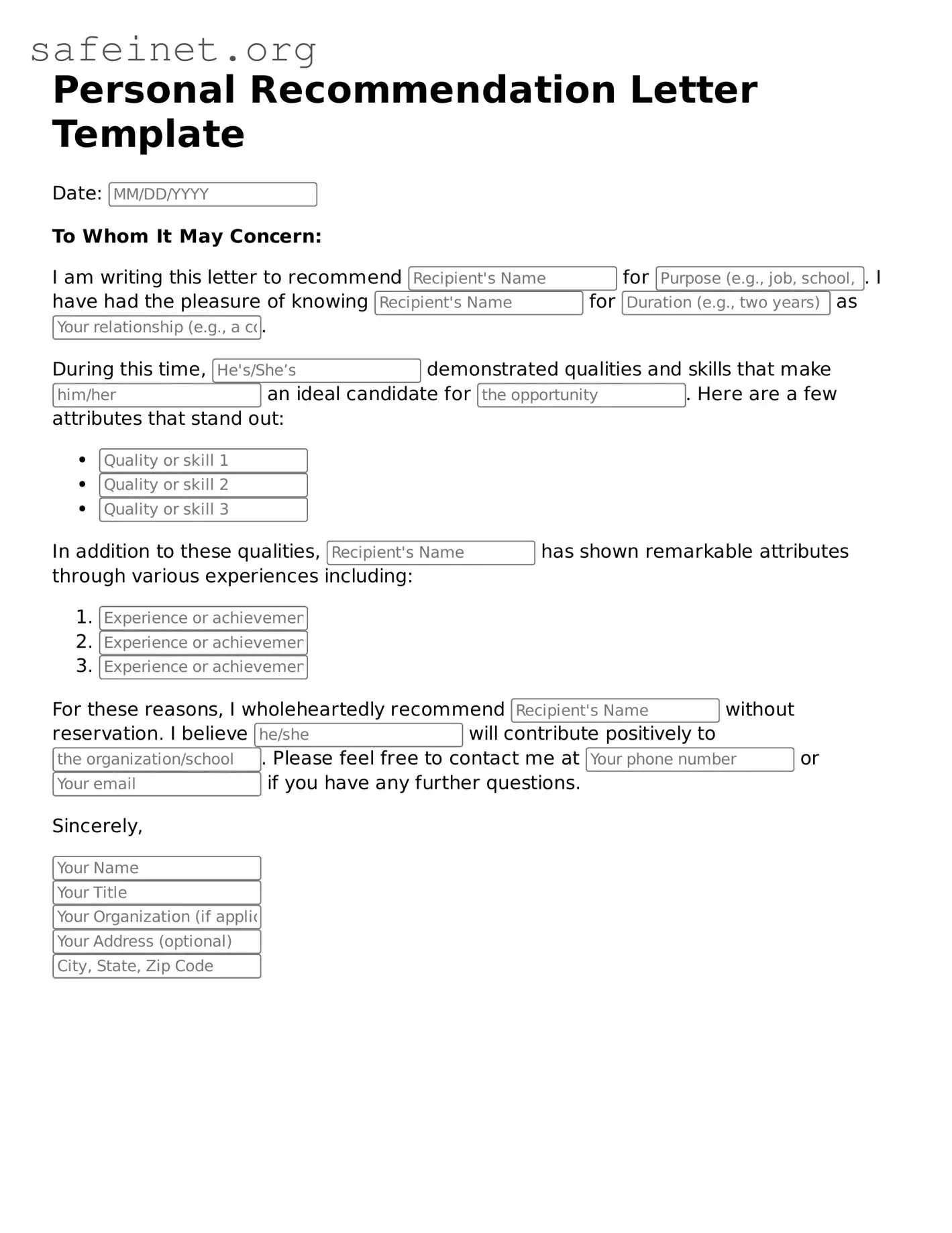What is a Personal Recommendation Letter?
A Personal Recommendation Letter is a document in which someone endorses another person’s qualifications, character, and abilities. It is typically provided to support applications for jobs, educational programs, or other opportunities. The letter offers insight into the person's strengths and may highlight specific examples of their skills and accomplishments.
Who can write a Personal Recommendation Letter?
Typically, Personal Recommendation Letters are written by people who know the individual well. This may include teachers, employers, colleagues, or mentors. It’s important that the writer can speak credibly about the individual's abilities and character, as their perspective lends weight to the recommendation.
What should be included in a Personal Recommendation Letter?
A strong Personal Recommendation Letter includes several key elements. It should begin with an introduction that establishes the relationship between the writer and the individual. Next, the letter should detail specific skills, accomplishments, and examples of the person's character. Finally, a conclusion that reaffirms the writer's recommendation and provides contact information for follow-up is essential.
How long should a Personal Recommendation Letter be?
Generally, a Personal Recommendation Letter should be one page in length. This allows the writer to provide enough detail to be helpful while also being concise. It’s important to stay focused on the individual’s strengths and to avoid unnecessary information that does not support the recommendation.
Is it necessary to format the letter in a specific way?
While there isn't a strict format required for a Personal Recommendation Letter, it's best to use a professional tone. Typically, the letter should include the date, the writer's information, and a salutation. If applicable, using a formal letter format with clear paragraphs can enhance readability and presentation.
Can a Personal Recommendation Letter be used for multiple applications?
Yes, a Personal Recommendation Letter can often be used for multiple applications. However, it may be beneficial to tailor the letter slightly for different opportunities. Specific references to the role or program can make the recommendation more relevant and impactful.
How can I request a Personal Recommendation Letter?
When requesting a Personal Recommendation Letter, reach out to the potential writer well in advance of the deadline. Explain why you are seeking the recommendation and share relevant details about the position or program. Provide context, such as your accomplishments and how the writer knows you. This can help them write a more personalized and meaningful letter.
